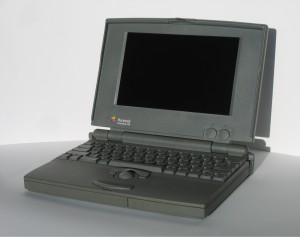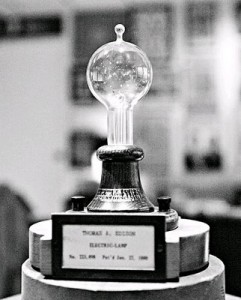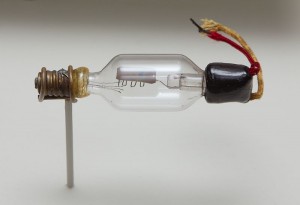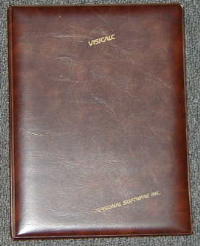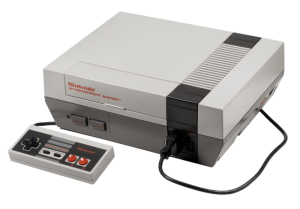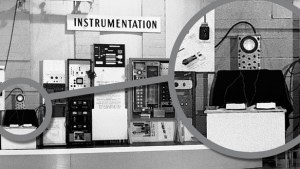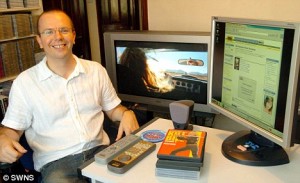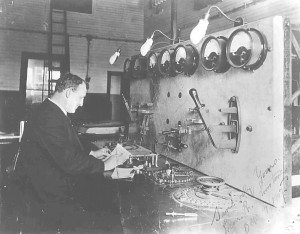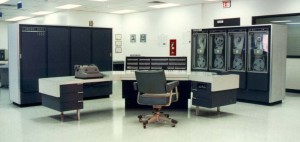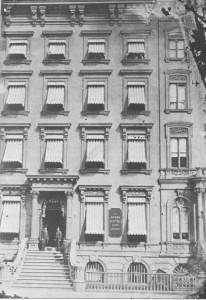Apple Introduces PowerBook
At the COMDEX computer expo in Las Vegas, Apple introduces the first line of PowerBook notebook computers, the PowerBook 100, PowerBook 140, and PowerBook 170. The first truly portable Macintosh, the PowerBook line redefined portable computing and set the bar for future laptop designs. For example, the PowerBooks were the first laptop to have a trackball positioned in front of the keyboard. Most existing PC laptops of the time ran DOS and were therefore keyboard-oriented, requiring the use of external mice.
Edison Perfects Light Bulb
Thomas Edison perfects the first commercially practical incandescent light bulb. Using a filament of carbonized cotton thread, his first attempt at this design results in a bulb that lasts about 13.5 hours before burning out. He later extends the life of the bulb to 40 hours. Edison’s successful design came only after he had tested over 6,000 different vegetable fibers during a span of over 18 months running 1,200 experiments and spending $40,000.
Triode Announced
Dr. Lee DeForest announces his three-element electrical vacuum tube, later known as a triode. The triode was able to produce a large voltage-amplifying effect, which when used to amplify weak signals, will make long-distance communication possible for the first time.
VisiCalc Officially Released
According to Dan Bricklin, the first “real” release of VisiCalc was completed and packaged for shipment. VisiCalc was the first commercially available spreadsheet software and quickly became the first “killer app” of the personal computer market.
NES Hits North America
Nintendo releases the Nintendo Entertainment System (NES) in New York and limited other North American markets. An immediate hit, Nintendo released the game nationwide in February 1986. Along with the NES, Nintendo released eighteen games that day, including: 10-Yard Fight, Baseball, Clu Clu Land, Donkey Kong Jr. Math, Duck Hunt, Excitebike, Golf, Gyromite, Hogan’s Alley, Ice Climber, Kung Fu, Mach Rider, Pinball, Stack-Up, Tennis, Wild Gunman, Wrecking Crew, and Super Mario Bros.
The World’s First “Video” Game
William Higinbotham and Robert Dvorak, Sr. show off a tennis simulator game they called Tennis for Two. Developed on a Donner Model 30 analog computer using an oscilloscope, it is the first known electronic game to use a graphical display. Higinbotham and Dvorak developed the game to show off to visitors to the Brookhaven National Laboratory where they worked. The game was only shown off twice, during the laboratory’s annual visitor’s day. While hundreds of visitors lined up to play the game when it was made available, little was known about the game for decades. While somewhat similar in gameplay to the later hit Pong, there is no known direct relationship between the games.
IMDb Launched
Colin Needham, an English movie fan, launches the “rec.arts.movies movie database”, which would later be known as the Internet Movie Database, or IMDb. An engineer working for HP at the time, by 1996 Needham quit his job to work on IMDb full-time. The IMDb is one of the most visited sites on the Internet and was acquired by Amazon in 1998. Needham is still the General Manager of the IMDb to this day.
First Transatlantic Wireless Telegraph Service
Guglielmo Marconi officially opens the first commercial transatlantic wireless telegraph service, which runs between Nova Scotia and Ireland.
CDC 1604 Released
Control Data Corporation (CDC) releases their CDC 1604 computer, the world’s fastest computer at the time and the first commercially successful fully-transistorized computer. The 1604 was CDC’s first computer, primarily designed by engineer Seymour Cray, who would later go on to found Cray Research and be called the “father of the supercomputer”.
Edison Electric Light Company Formed
Thomas Edison and a group of investors form the Edison Electric Light Company. The goal of the company was to provide financial support for Edison’s electric light experiments and work on developing an electrical lighting system for an entire city. The long-lasting carbonized filament light bulb was developed by Edison while working for this company. Eventually this and several other Edison companies were merged to form General Electric.

